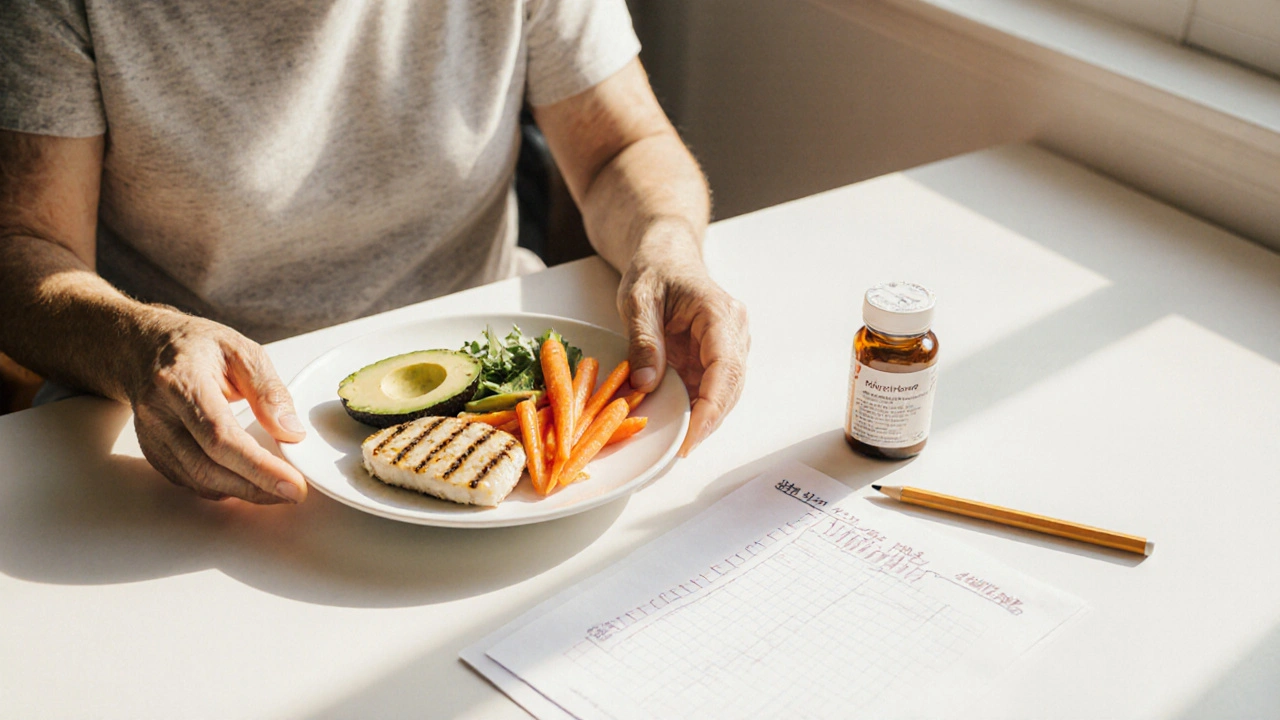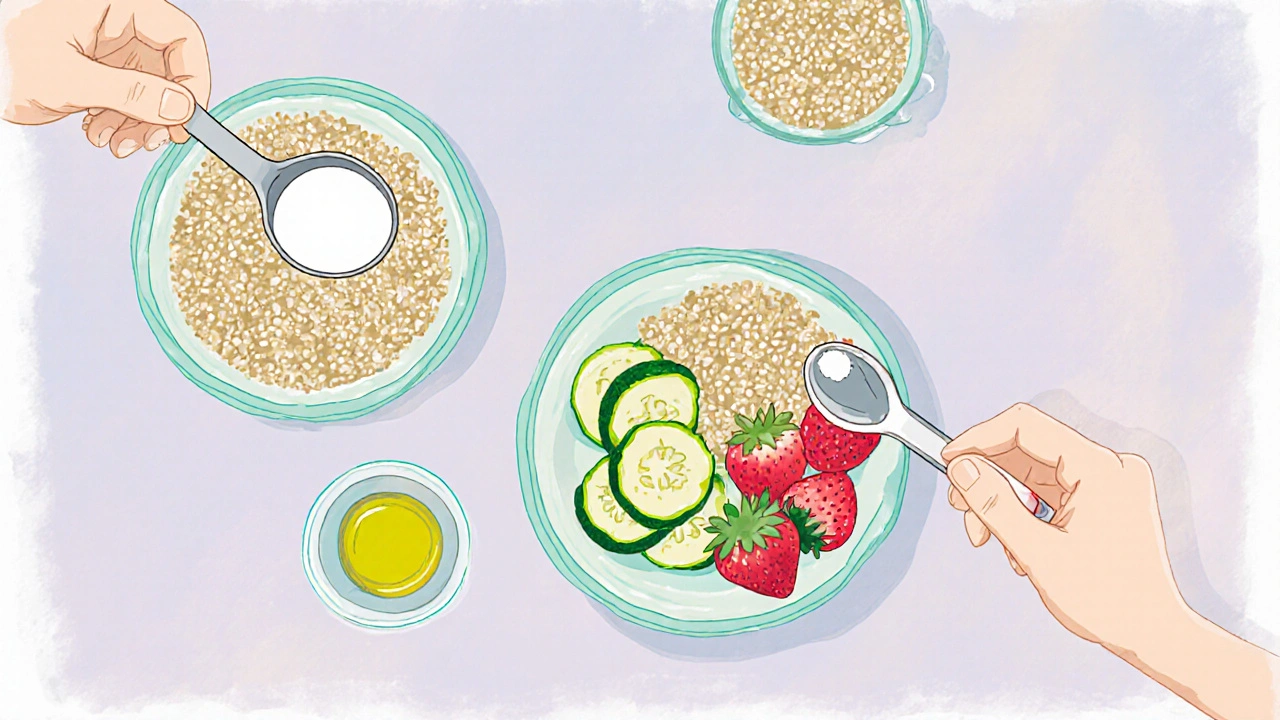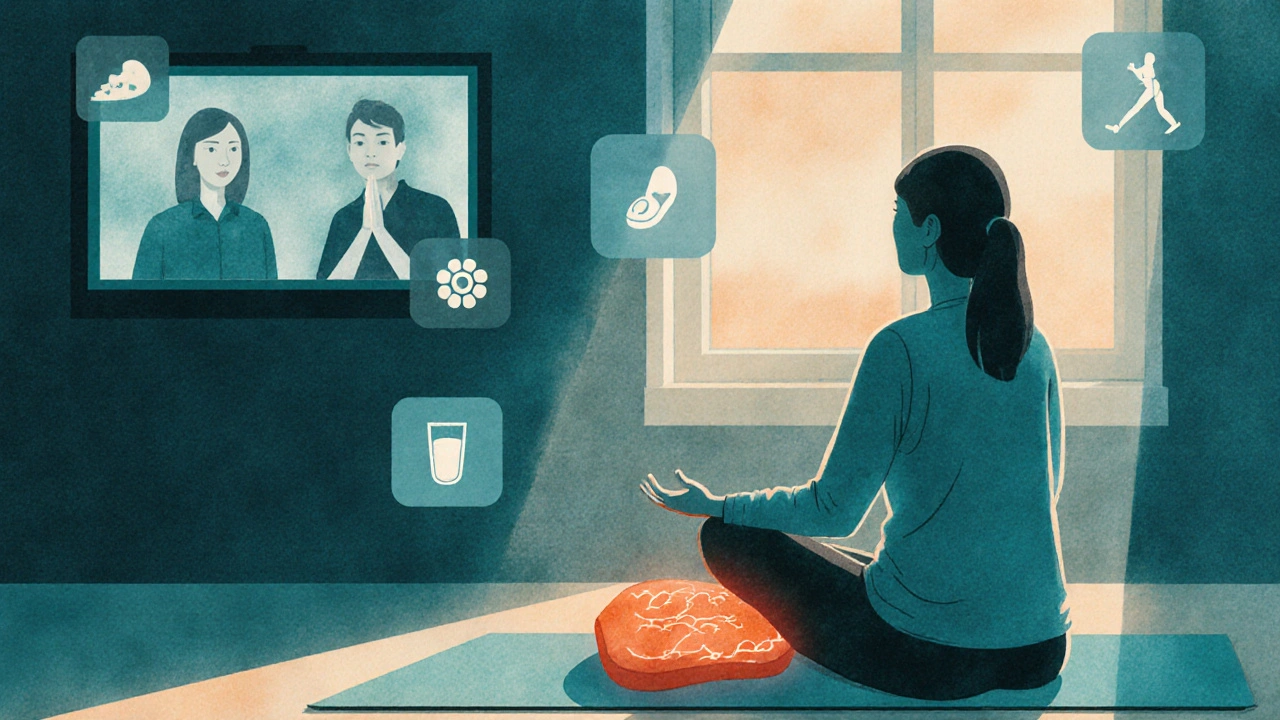Coping with Chronic Pancreatitis Pain: Practical Tips for Managing Symptoms

Oct, 10 2025
Quick Takeaways
- Eat small, low‑fat meals and use enzyme replacement therapy to aid digestion.
- Combine gentle exercise with stress‑reduction techniques for better pain control.
- Work with your doctor to choose the right mix of medications, avoiding long‑term opioid dependence.
- Keep a daily pain‑tracking checklist to spot triggers early.
- Lean on support groups or counseling to manage the emotional toll of chronic pain.
Understanding Chronic Pain in Pancreatitis
When dealing with pancreatitis is an inflammation of the pancreas that can cause persistent abdominal pain and digestive problems, chronic pain is pain that lasts longer than three months and often has both physical and emotional components. The pancreas releases enzymes that help break down food; inflammation blocks that process, leading to buildup of pressure, nerve irritation, and constant ache. Understanding that the pain stems from both the organ itself and the nervous system helps you choose targeted strategies rather than relying on one‑size‑fits‑all solutions.
Nutrition Strategies to Reduce Pain
Food is the biggest trigger for pancreatitis flare‑ups. A low‑fat diet is a eating plan that limits total fat intake to 20-30 grams per day, prioritizing lean proteins, whole grains, and fruits. Keeping meals small (4-6 bites) and spaced out every 2-3 hours prevents the pancreas from being overloaded.
Adding enzyme replacement therapy is a prescription of pancreatic enzymes taken with meals to aid digestion and reduce abdominal pressure can dramatically cut pain spikes. Typical dosing starts at 25,000-40,000 lipase units per meal; your doctor will adjust based on stool consistency and nutrient absorption.
Practical tips:
- Choose baked, steamed, or grilled options over fried foods.
- Swap butter and cream for olive oil or avocado in small amounts.
- Include high‑fiber vegetables like carrots, zucchini, and leafy greens to slow gastric emptying.
- Stay hydrated-aim for at least 8 cups of water daily, avoiding sugary drinks.

Medication Options and How They Help
Medications should be personalized. Here’s a quick look at common choices:
| Option | How It Works | Typical Use | Key Considerations |
|---|---|---|---|
| Acetaminophen | Pain blocker that works centrally | Mild to moderate pain, safe for most | Limit to 3g/day; avoid with heavy alcohol use |
| NSAIDs (ibuprofen, naproxen) | Reduces inflammation and pain | When inflammation is a major component | Can irritate stomach; watch kidney function |
| Antispasmodic medication is a drug such as hyoscine or dicyclomine that relaxes smooth muscle in the pancreatic ducts | Stops muscle cramps that worsen pain | Episodes of intense cramping | May cause dry mouth, dizziness |
| Enzyme supplements are tablet or capsule form of pancreatic enzymes taken with meals | Improves digestion, lowers pancreatic workload | Every meal and snack | Need proper dosing; may cause foul‑smelling stools |
| Prescription opioids | Strong pain relief by binding to CNS receptors | Severe, breakthrough pain only | Risk of dependence; use sparingly |
Work closely with a gastroenterologist or pain specialist. The goal is to keep opioids as a last resort, focusing on enzyme therapy, antispasmodics, and non‑pharmacologic methods first.
Lifestyle Adjustments that Make a Difference
Beyond food and meds, everyday habits shape pain levels.
- Physical activity is any movement that raises heart rate slightly, such as walking, gentle yoga, or swimming. Aim for 20‑30 minutes most days; this improves blood flow to the pancreas and releases endorphins.
- Stress reduction technique is methods like deep breathing, mindfulness meditation, or progressive muscle relaxation that lower cortisol and muscle tension. Even 5 minutes before meals can blunt pain spikes.
- Prioritize sleep - 7‑8 hours on a dark, cool room helps the body repair inflamed tissue.
- Avoid alcohol completely; even occasional drinks can reignite inflammation.
Home Remedies & Complementary Therapies
Simple at‑home actions can complement medical care.
- Apply a warm compress or heating pad to the upper abdomen for 15 minutes. Heat relaxes smooth muscle and eases cramping.
- Gentle abdominal massage in a clockwise direction after meals can aid transit.
- Consider acupuncture sessions; several small studies show reduced pain scores in chronic pancreatitis patients.
- Herbal teas such as chamomile or ginger (in low‑fat form) may soothe digestive upset.

Building a Support System
Living with chronic pain isn’t just a physical battle; the emotional side matters a lot.
- Join an online support group is a community of patients and caregivers sharing experiences, tips, and encouragement. Regular check‑ins reduce feelings of isolation.
- Schedule periodic counseling with a therapist trained in chronic illness coping strategies.
- Keep a close communication loop with your healthcare team; bring notes from your daily pain checklist to each visit.
Daily Pain‑Management Checklist
- Record pain level (0‑10) before each meal.
- Take enzyme tablets with every bite of food.
- Choose a low‑fat option; note any foods that worsen pain.
- Perform a 5‑minute breathing exercise after meals.
- Do a 20‑minute walk or gentle stretch before bedtime.
- Apply heat if pain rises above a 5 during the evening.
- Log medication doses and any side effects.
- Review checklist with your doctor during the next appointment.
Frequently Asked Questions
Can I eat fruit if I have pancreatitis?
Yes, fresh fruit is fine as long as you avoid canned varieties packed in syrup. Opt for low‑acid options like bananas or pears, and pair them with a small amount of protein to keep blood sugar stable.
Are over‑the‑counter painkillers safe?
Acetaminophen is generally safe when kept under 3g per day. NSAIDs should be used cautiously because they can irritate the stomach lining, which is already sensitive in pancreatitis patients.
How often should I take pancreatic enzymes?
Take enzymes with every meal and snack, exactly at the first bite. The typical dose is 25,000-40,000 lipase units per 100g of food, but your doctor will fine‑tune it based on stool fat content.
Is alcohol completely forbidden?
For chronic pancreatitis, even small amounts can trigger inflammation. The safest route is total abstinence. If you struggle with stopping, seek counseling or a support program.
Can stress really make my pain worse?
Stress raises cortisol, which can increase gut motility and trigger pancreatic spasms. Simple stress‑reduction techniques-deep breathing, short meditations, or listening to calming music-have been shown to lower reported pain scores.
Managing chronic pancreatitis pain is a marathon, not a sprint. By combining a low‑fat diet, enzyme therapy, smart medication choices, gentle movement, and a strong support network, you can keep pain levels low enough to enjoy daily life. Remember to track your symptoms, stay in touch with your care team, and adjust the plan as needed. Consistency is the secret sauce.
